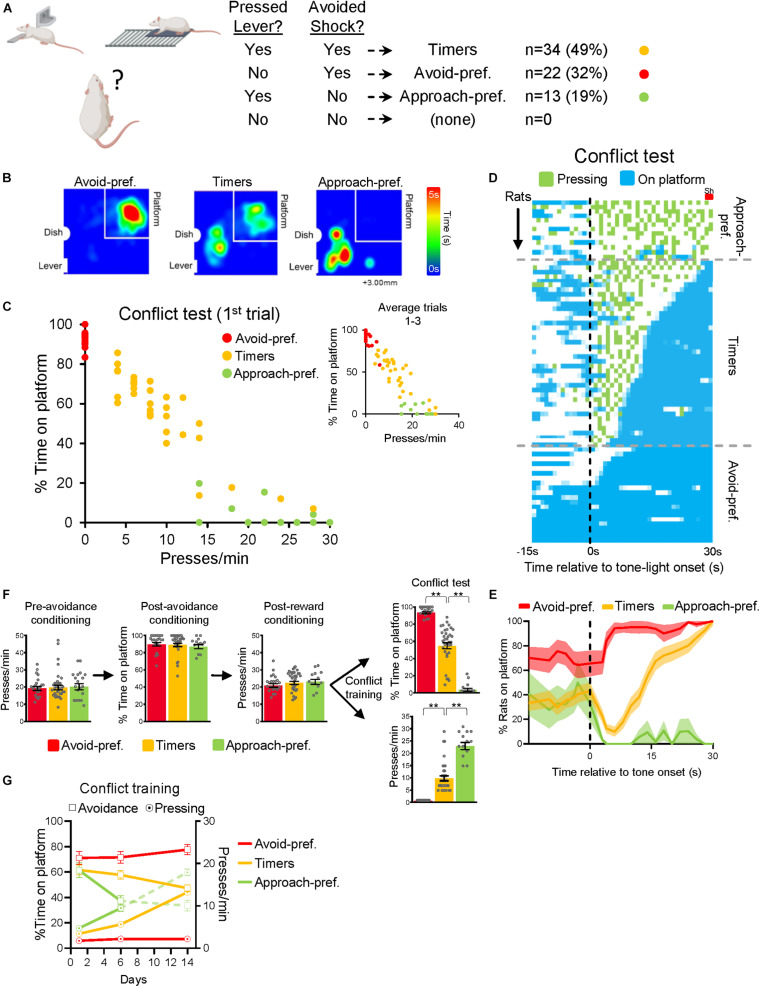FIGURE 2.
Rats showed three distinct strategies for resolving approach-avoidance conflict. (A) Criteria for separating rats into different conflict strategies. Rats were separated into three subgroups: Avoidance-preferring (22/69 32%, red), Approach-preferring (13/69, 19%, green), and Timers (34/69, 49%, yellow). (B) Heat maps showing the location of rats during the conflict test (n = 7 for each subgroup). (C) Presses/min vs. % time pressing for individual rats at conflict test trial 1, showing that the three subgroups were distinct from each other. Inset shows averaged data for all three trials of conflict test. (D) Actogram depicting each rat’s behavior during conflict test (bin = 1 s) across the conflict test. Subgroups are separated by horizontal dashed lines. (E) Average time spent on platform for each subgroup. (F) Averaged behaviors for each subgroup prior to, and following, conflict training. Subgroup differences were not apparent prior to conflict training. (G) Average time spent avoiding (square) and pressing (circle) during conflict training, for each subgroup. **P < 0.01.

